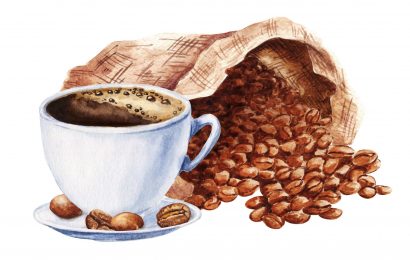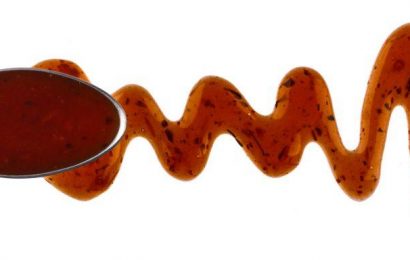Choosing the healthiest foods from the thousands of items available at your local supermarket can be one of the most challenging aspects of learning to eat well with diabetes. Consider the fact that a medium-size U.S. grocery store sells 45,000 different items and
carries over 100 varieties of cereal alone! The prospect of comparing the ingredients and nutrition information of even a fraction of those brightly colored boxes of flakes, puffs, and “Os” is enough to make even shoppers with good intentions decide to just grab the first box they see.
Fortunately, help in identifying the best products available on store shelves may already be at a supermarket near you. Food scoring (also called food rating or nutrition profiling) is a type of product and shelf-labeling system that enables consumers to judge, at a glance, the relative healthfulness of every food in the store. Food scores promise to make shopping for healthy foods easier; however, be aware that they may also drastically alter your shopping habits — for the better!
Food scoring systems have been around for a long time, but they’ve mostly been used by scientists researching the connections between diet, health, and disease. Most of these food scoring systems use formulas that compare the amounts of beneficial nutrients (such as vitamins, minerals, and fiber) to less beneficial nutrients (such as saturated fat, cholesterol, sodium, and sugar) in foods. Essentially, foods containing favorable amounts of beneficial nutrients receive the highest scores.
Some formulas also consider the number of calories a food contains. Foods that provide high levels of nutrients per calorie are generally considered healthier and rate more highly than those that contain fewer nutrients per calorie. For example, strawberries provide high levels of vitamins and fiber and a low number of calories per serving. One serving of strawberries (1 ¼ cups) contains approximately 65 calories, 15 grams of carbohydrate, 4 grams of fiber, and nearly twice the Recommended Daily Allowance (RDA) of vitamin C. A serving of strawberry jam (1 tablespoon), on the other hand, contains about the same amount of calories (55) and carbohydrate but only trace amounts of fiber and vitamin C. In fact, you would have to consume 68 tablespoons of jam to get the amount of vitamin C in 1 ¼ cups of fresh berries. In a food scoring system, therefore, strawberries would rate highly and be considered a nutrient-dense food beneficial to health. Strawberry jam would receive a lower rating, indicating that it should be eaten sparingly due to its high caloric and relatively low nutrient content.
Selecting fresh fruit over jam is an easy decision to make when you are shopping for the most nutritious, lowest-calorie foods at the supermarket. However, choosing the healthiest products from among the large variety of cereals, soups, frozen meals, and other types of foods can be a lot more challenging. The Nutrition Facts panels and lists of ingredients on product labels certainly provide helpful information for making comparisons. You can easily compare, for example, the calorie, carbohydrate, fat, and fiber content of different foods and decide to buy one product over another based on your particular needs and dietary goals. However, many people find glancing back and forth between different labels cumbersome and confusing. After all, some products that are low in fat may also be high in sodium or carbohydrate, or a food that is sugar-free may actually contain more calories than the same product sweetened with sugar. In cases like these, it’s difficult if not impossible to decide which product is the healthiest.
Guiding Stars
One relatively new food scoring system that has already been in use in grocery stores for several years now is Guiding Stars. If you live in Massachusetts, Maine, New Hampshire, Vermont, or New York, you may have already encountered and benefited from this system developed and used by the Hannaford Brothers supermarket chain. A few years ago, Hannaford responded to consumer requests to make shopping for healthy foods easier by creating their Guiding Stars program. In this program, the overall nutritional value of foods sold in Hannaford stores is depicted by a number of stars, from no stars for foods containing low levels of beneficial nutrients, to three stars for the most nutritious foods available.
To determine how many stars a food receives, Hannaford simply plugs the information you see on the Nutrition Facts panel into a formula, essentially doing all of those product comparisons for you. It credits a food for the presence of vitamins, minerals, fiber, and whole grains, and debits a food for the presence of saturated or trans fats, cholesterol, added sugars, and sodium. This system seems to help people buy healthier foods. In fact, over the first 12 months of program use, Hannaford shoppers consistently bought more of the products rated with one or more stars than those with no stars.
Hannaford made an interesting discovery when they rated the foods sold in their stores: Only about 28% of the products they sell rated highly enough to receive one or more stars. In fact, some foods that were labeled and marketed with health claims — including some low-sodium and low-fat products — received no stars at all. Some researchers and product manufacturers questioned whether Hannaford’s nutrition rating formula was too stringent and incorrectly excluded some foods from a better score. Others point out, however, just what most shoppers already know: A food labeled with claims like “Low Fat” or “No Cholesterol” isn’t necessarily highly nutritious and/or low in calories.
For example, the label on a package of black licorice may proclaim that it is a “low fat food.” It does not state, however, that licorice is also a significant source of calories (since it is composed primarily of refined wheat flour and sweeteners), making it a not-so-healthy treat, particularly if eaten in large quantities. Health claims are placed on labels to help sell the food, but they don’t give a comprehensive nutrition analysis and are not enough to distinguish a nutrient-dense food from one that is nutrient-poor.
Overall Nutrition Quality Index
A second new food scoring system is scheduled to appear in selected supermarkets across the United States and online this September. This system, called the Overall Nutrition Quality Index, or ONQI, uses numbers (from 0 to 100) instead of stars to rate foods, and considers more nutrients than the Guiding Stars system. (See “Food Scoring Systems Compared” for details.) Developed by a team of 12 nutrition experts, ONQI assigns nutrient scores to foods based on a formula that includes 30 different factors, including the glycemic load of a food and levels of nutrients such as bioflavonoids and omega-3 fatty acids. (The glycemic load of a serving of food is based on the food’s glycemic index and the number of grams of carbohydrate in a serving.) The ONQI formula is complex and goes beyond comparing just relative amounts of individual nutrients. For example, greater value is placed on nutrients that are known to help prevent diseases such as cancer or heart disease, and foods providing these protective nutrients receive higher scores.
A few food ratings have already been posted at www.nuval.com, and so far, there have been no surprises: mustard greens and strawberries have a score of 100, salmon gets an 82, and regular soda receives a 1. Foods you expect to rate well, such as fruits, fish, and vegetables, likely will have a high score, while foods that are obviously not highly nutritious, like sodas and sweets, won’t. David Katz, M.D., M.P.H., Director of the Yale Griffin Prevention Research Center and lead scientist in the development of ONQI, explains that ONQI ratings will be especially helpful when making product comparisons within a category of foods, such as cereals, for instance. After all, the nutritional quality of cereal products varies widely, and the differences are not always obvious to the consumer. ONQI ratings will make those differences clearer.
The creators of ONQI hope that their system, which gives the most nutrient-dense foods the highest scores, will help to make all Americans healthier. Most Americans are, according to the Dietary Guidelines for Americans, 2005, both over- and undernourished. They are over-nourished when it comes to calories, but undernourished when it comes to many essential nutrients such as fiber, vitamins, minerals, omega-3 fatty acids, and other substances that promote health and prevent disease. People whose diets lack these important nutrients may be more susceptible to diseases such as cancer, osteoporosis, heart disease, and diabetes.
In an attempt to address this problem, the Dietary Guidelines for Americans, 2005 recommends getting most of a day’s calories from nutrient-dense foods and only a small amount from added fats, sugars, or alcohol. The Guidelines call these “discretionary calories” and suggest a discretionary calorie allowance based on the total number of calories consumed per day. (To see a list of suggested amounts, see “Discretionary Calorie Allowances”.) The ONQI food scoring system was developed to specifically address these recommendations in a user-friendly fashion. By simply glancing at a food’s rating, shoppers can locate nutrient-dense foods and, ONQI’s developers hope, eat more of them and less of low-rated foods.
The ONQI rating system may benefit people with diabetes in a number of ways. Because the formula includes glycemic load, foods that are likely to have a smaller effect on blood glucose levels will rate more highly. Fat content and type of fat are also considered in the ONQI formula, so shoppers should be better able to identify foods with the healthiest types of fat, thereby reducing their risk of heart disease. Perhaps most notably, the ONQI rating system will favor those foods that contain the highest concentrations of vitamins, minerals, antioxidants, and other beneficial nutrients, many of which can have a positive effect on blood glucose control and reduce the risk of cardiovascular disease. A diet that’s high in magnesium, for example, has been associated with improved insulin sensitivity in people with Type 2 diabetes and reduced blood pressure in the general population. Good food sources of magnesium, such as whole grains, beans, and green vegetables, will tend to rate highly in the ONQI system. Choosing foods with higher ONQI scores may, therefore, increase your intake of magnesium as well as other beneficial nutrients whose levels are not usually listed in the Nutrition Facts panel on food labels.
Using the ONQI system
You may be wondering whether you will still need to check the Nutrition Facts panel for carbohydrate, sodium, or fiber content of products once the new rating system is put into place, or whether it will be enough to simply choose foods with high numbers. The answer is that it will still be useful and, at times, necessary to note the specific carbohydrate, sodium, or other nutrient content in a food. A product’s food score will not tell you the exact number of grams of carbohydrate per serving, so people with diabetes who count carbohydrates will still need to get that information from the Nutrition Facts panel.
You may also be wondering whether you should avoid eating any food that has score below a certain number. Food scoring is not meant to label foods as “good” or “bad,” so there are no recommendations to completely avoid foods below a certain number. Scores are meant to guide shoppers toward the most nutritious foods — those that should form the base of a healthy diet. People do not need to eliminate foods that receive low scores from their diets; these foods should just be eaten less frequently and in smaller portions than those that rate more highly. Potato chips, for example, will have a significantly lower rating than carrots, but an occasional serving of potato chips is not likely, in the long run, to have serious health consequences.
Where to find ONQI ratings
ONQI ratings will begin to appear on products in select grocery stores in September. The system is open for use at any grocery store chain, but the first stores scheduled to display ratings are those belonging to the TOPCO cooperative, which include the independent chains Meijer and Marsh. (For a full list of members, look on www.topco.com.) Stores currently showing the ratings include Hy-Vee and Price Chopper. The first ONQI rollout will be in grocery store chains in the Midwest and Northeast, with more stores to sign on across the United States in the following months. However, food ratings will also be listed at www.nuval.com for shoppers without access to a participating supermarket.
The true benefit of ONQI ratings will be determined over time, but Dr. Katz and others involved with ONQI development are very optimistic about its value and potential for future applications. For example, the ONQI formula can be applied to recipes to determine nutrient density and therefore could be useful for both planning menus and revising recipes. For now, however, the optimal outcome of this new food rating experiment is to make it easier to select healthy foods at the market and improve the diet and health of all Americans.





